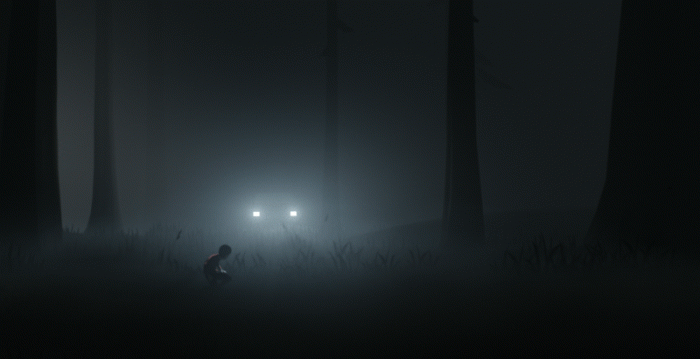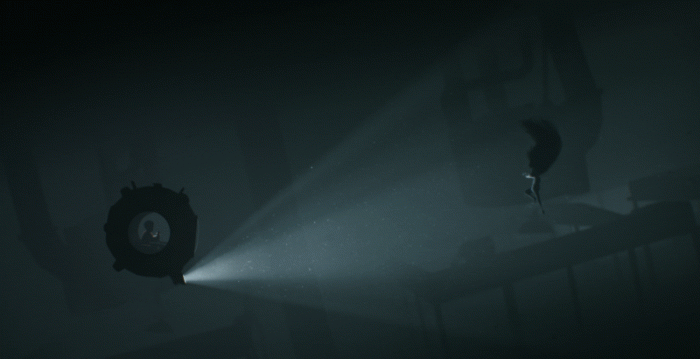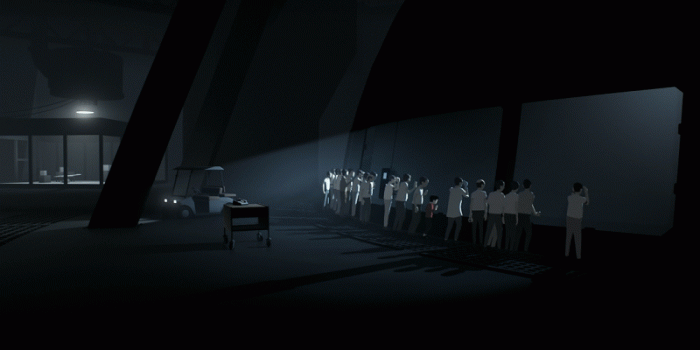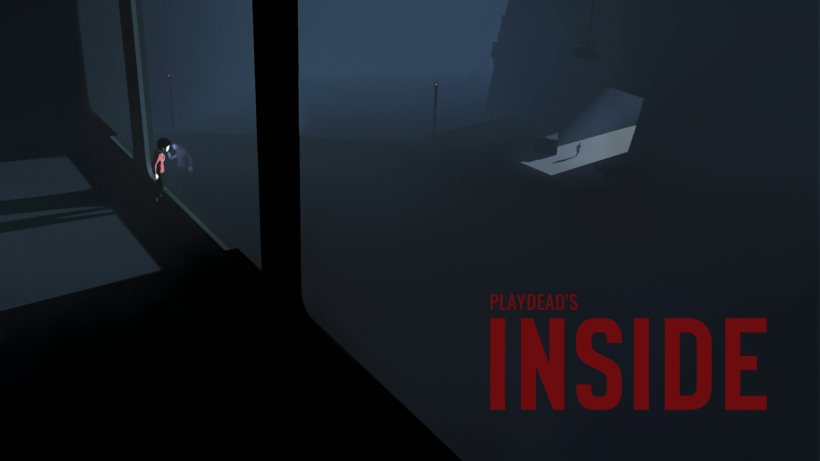Black and white and gold.
Two years after its initial release, INSIDE has arrived on a Nintendo platform for the first time, alongside its precursor LIMBO. The Switch is getting all of the indie gems at this point, and whilst the team over at Playdead meticulously craft their next opus, it’s great to see their games getting further life and attention on a thriving platform. They deserve it.

Much like its older brother LIMBO, INSIDE is a melancholic yet endearing puzzle-platformer. The core controls are as simple as three buttons – run, jump and interact – and Playdead make the gameplay fluent and satisfying from the beginning. A young boy drawn into the depths of a dark dystopia, INSIDE has you going out of your comfort zone to get to its core. With tactile, responsive, physics-based puzzles that can see you mind-controlling multiple drone-like people at once, to tense, almost rhythmic platforming segments to avoid danger, it’s a game that keeps at a steady pace throughout its roughly three-hour length, forcing you to critically think in tense situations but never overbearing or resulting in trial and error that could dilute the atmosphere it works so hard to maintain.
I won’t delve too much into INSIDE’s story – many have already tried in the past – but what I will say is that the mystery surrounding this game, and subsequently the discussion it sparks, is brilliant. I also think it’s exactly what the team at Playdead intended it to be. The guttural responses it evokes spark natural conversation, and it made me want to go out and show others (including those who aren’t typically game-players) to see what they thought of its abstract narrative.

INSIDE features the best animation I’ve seen in a game, to the point where I felt like I was literally playing through a sombre Pixar film. Despite complete agency over the character, every single moment is scripted and designed so well that the environment feels tactile, with the physics reacting to your every move and giving a stunning illusion of realism. It’s actually quite breathtaking seeing some of the lighting effects and objects, and every section felt hand-crafted. I was genuinely stunned looking at a plank of wood falling to the ground and shattering in such a lifelike way. It felt real, working in synergy with the chilling yet vacant audio, and the dynamic, seamless camera to lull you into immersion.
On the protagonist particularly, his fluidity of movement helps to humanise him in a way that LIMBO’s character didn’t for me, and the shrieks of fear and heavy breaths make you genuinely feel for him, saying more than dialogue could in the moment.
Playdead are known for their monochromatic aesthetic and the mood it creates, and INSIDE is no exception, although it should also be commended for its poignant drops of colour here and there. Alongside the vapid, dystopian hallways and corridors, the devs interweave stark, hopeful streaks of red and yellow, highlighting pathways elegantly. In the same way that the controls are inherently programmed into our brains (and subsequently in the way that the character can convey fear and surprise without even uttering a word), it’s an instant semiotic, alerting to a potential secret path or significant event without breaking subtlety.
Performance-wise, the game deserves praise again for running as smoothly as I remember it originally on the PC. I played about 50/50 in handheld and docked mode, finding only a couple of jagged lighting effects when portable. The addition of HD Rumble support is welcome, and aids the experience well. As if a constant worry of what’s around the corner wasn’t prominent enough, your controller’s rippling tremors now alarm you as to what is coming, helping with that feeling of existential dread.

Part of the brilliance of INSIDE comes from the conflicting feelings it evokes when playing; a weird push-pull dichotomy of wanting and not wanting to dive further into the shadow of the unknown. It’s not quite horror; it isn’t frightening as such, but it’s like you know you’re being lured into danger and yet need to find out why (a feeling that seems to be thematically relevant when you think about the other mindless characters you control in certain puzzle segments). That stomach-turning worry – the fear of what might be around the corner – fights with the desire to proceed and progress, and is inspired by the unwavering bravery of the child that you control. Playdead have somehow managed to personify a faceless, effigy of a character, representative of so many different things depending on what your interpretation of the game is.
The way the game uses the concept of water to give you comfort, before quickly ripping it away, is brilliantly executed, and a good example of this ‘push-pull’ effect. Take the submarine section, for example: the game presents you with a vast open area to explore in the enclosure of a safe capsule, before forcing you to leave it and put yourself in danger in order to progress. This feeling is constant throughout INSIDE; you’re on the run right from the start, and if it were any longer this feeling may falter. The game’s length is a gripe for some, though I thought it was just right in attaining the experience intended. Any longer and it may have lessened the effect – though by finishing confidently and succinctly it gave room to breathe and soak in, rather than being relieved it was over. Many games overstay their welcome nowadays, under pressure to have a sufficient length in order to be deemed ‘value-for-money’ by consumers, but INSIDE gladly combats this idea, whilst also containing hidden pathways and a second secret ending for those desperate for more.

INSIDE is a special game, and I’d recommend playing through it in one or two sittings, with the lights turned off and headphones in for the best experience. A malevolent Pixar film with fluent, rhythmic platforming, and clever puzzles that are challenging but not overbearing, it’s a beautifully-crafted title that everyone should have in their Switch library.
INSIDE
Summary
Playdead’s INSIDE is masterful in what it sets out to achieve. It might not be Breath of the Wild in terms of its scope, or Super Mario Odyssey in terms of its level variety, but it provides a visceral and beautiful three hour long experience that is difficult to forget.

